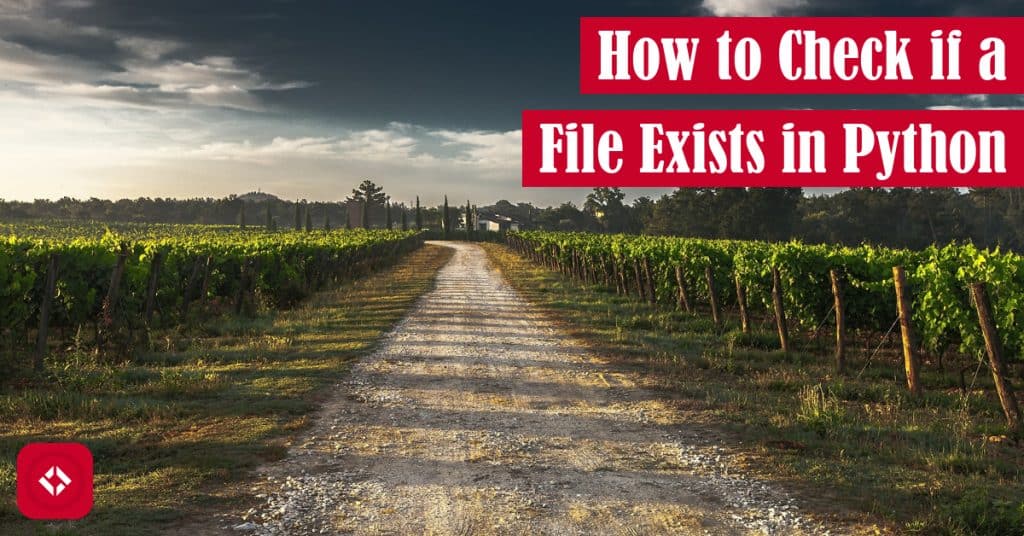Python Check File Existence Without Exceptions
Learn multiple Pythonic ways to check for file existence without triggering exceptions, ensuring smoother file handling in your code.
Learn multiple Pythonic ways to check for file existence without triggering exceptions, ensuring smoother file handling in your code.
In Python, you can easily check for the existence of a file before attempting to access it. This is crucial for preventing errors and ensuring your code runs smoothly. This article will guide you on how to accomplish this using the os.path module, specifically the os.path.exists() and os.path.isfile() functions.
To check if a file exists in Python without raising exceptions, you can use the os.path.exists() or os.path.isfile() functions from the os.path module.
First, import the os.path module:
import os.pathUsing os.path.exists():
This function checks if a given path exists, regardless of whether it's a file or a directory.
if os.path.exists('myfile.txt'):
print('The path exists.')
else:
print('The path does not exist.')Using os.path.isfile():
This function specifically checks if a given path points to a file.
if os.path.isfile('myfile.txt'):
print('The file exists.')
else:
print('The file does not exist.')Replace 'myfile.txt' with the actual file name and path you want to check.
These methods return True if the file or path exists and False otherwise, allowing you to handle the presence or absence of the file gracefully without encountering exceptions.
This Python code checks if a file exists at the specified path. It uses two methods from the os.path module: exists() to check if the path exists (file or directory) and isfile() to check specifically for a file. The code prints messages indicating whether the path and file exist.
import os.path
# File path to check
file_path = 'myfile.txt'
# Using os.path.exists()
if os.path.exists(file_path):
print(f'The path "{file_path}" exists.')
else:
print(f'The path "{file_path}" does not exist.')
# Using os.path.isfile()
if os.path.isfile(file_path):
print(f'The file "{file_path}" exists.')
else:
print(f'The file "{file_path}" does not exist.')This code first defines the file path to check as file_path. Then, it demonstrates both methods:
os.path.exists(file_path): Checks if the path exists, regardless of whether it's a file or directory.os.path.isfile(file_path): Specifically checks if the path points to a file.Both methods return True or False, allowing you to control the program flow based on the file's existence without encountering exceptions.
Importance of Checking: Emphasize that checking for file existence is crucial before operations like opening, reading, or writing to avoid potential errors if the file is not present or accessible.
Alternatives to os.path: Briefly mention the Pathlib module (specifically Path.exists() and Path.is_file()) as a more modern, object-oriented way to interact with files and directories in Python.
Error Handling (Even with Checks): While these methods prevent exceptions related to checking, remind readers that file operations can still throw errors due to permissions, file being in use, etc. Robust code should include error handling (e.g., try...except blocks) around file operations even after checking for existence.
Use Cases:
Security Considerations: In security-sensitive contexts, be aware of race conditions. There's a small window between checking for a file and then using it where the file's state could change.
This article provides a concise summary of how to check if a file exists in Python without raising exceptions.
| Method | Description | Module |
|---|---|---|
os.path.exists(path) |
Checks if a given path exists, regardless of whether it's a file or directory. Returns True if it exists, False otherwise. |
os.path |
os.path.isfile(path) |
Checks if a given path points specifically to a file. Returns True if it's a file, False otherwise. |
os.path |
Key Points:
True or False) indicating the existence of the file or path."myfile.txt" with the actual file name and path you want to check.By using these methods, you can write more robust and error-resistant Python code when working with files. Always prioritize checking for a file's existence before attempting any operations on it to ensure smoother program execution and a better user experience.
 Here is how to check whether a file exists without exceptions in Python | Here is how to check whether a file exists without exceptions in Python. import os.path if os.path.exists('myfile.txt'): print('The file exists.') else: print(' ...
Here is how to check whether a file exists without exceptions in Python | Here is how to check whether a file exists without exceptions in Python. import os.path if os.path.exists('myfile.txt'): print('The file exists.') else: print(' ... How do I check whether a file exists without exceptions? | Sentry | The Problem It is common practice to raise exceptions, especially when handling files. This practice is useful as it allows you to anticipate any errors that…
How do I check whether a file exists without exceptions? | Sentry | The Problem It is common practice to raise exceptions, especially when handling files. This practice is useful as it allows you to anticipate any errors that… How to Check if a File Exists in Python: Try/Except, Path, and IsFile ... | Once again, welcome to the How to Python series. In this collection, we explore programming problems that have quick solutions in Python. In this edition,…
How to Check if a File Exists in Python: Try/Except, Path, and IsFile ... | Once again, welcome to the How to Python series. In this collection, we explore programming problems that have quick solutions in Python. In this edition,… Python Check if Files Exist – os.path, Pathlib, try/except ... | With exception handling, your script can detect the FileNotFoundError: [Errno 2] No such file or directory error as it occurs and react to it accordingly.
Python Check if Files Exist – os.path, Pathlib, try/except ... | With exception handling, your script can detect the FileNotFoundError: [Errno 2] No such file or directory error as it occurs and react to it accordingly. How to check whether a file exists without exceptions ... | A Computer Science portal for geeks. It contains well written, well thought and well explained computer science and programming articles, quizzes and practice/competitive programming/company interview Questions.
How to check whether a file exists without exceptions ... | A Computer Science portal for geeks. It contains well written, well thought and well explained computer science and programming articles, quizzes and practice/competitive programming/company interview Questions. Check if a file exists or not without exception in Python - Python ... | How to check if a file exists without exception in Python.
Check if a file exists or not without exception in Python - Python ... | How to check if a file exists without exception in Python. Argparse FileType trick - Ideas - Discussions on Python.org | Hello, this is my first post 👋 I’d like to share a recurring frustration with the argparse library. Sometimes I need to check whether an argument is a file or not. The simpler approach is to use os.path.isfile, but I don’t like setting up exceptions when the argument is not a file: parser.add_argument("file") args = parser.parse_args() if not os.path.isfile(args.file): raise ValueError("NOT A FILE!") What I like to do instead is to use argparse.FileType: parser.add_argument("file", ...
Argparse FileType trick - Ideas - Discussions on Python.org | Hello, this is my first post 👋 I’d like to share a recurring frustration with the argparse library. Sometimes I need to check whether an argument is a file or not. The simpler approach is to use os.path.isfile, but I don’t like setting up exceptions when the argument is not a file: parser.add_argument("file") args = parser.parse_args() if not os.path.isfile(args.file): raise ValueError("NOT A FILE!") What I like to do instead is to use argparse.FileType: parser.add_argument("file", ...